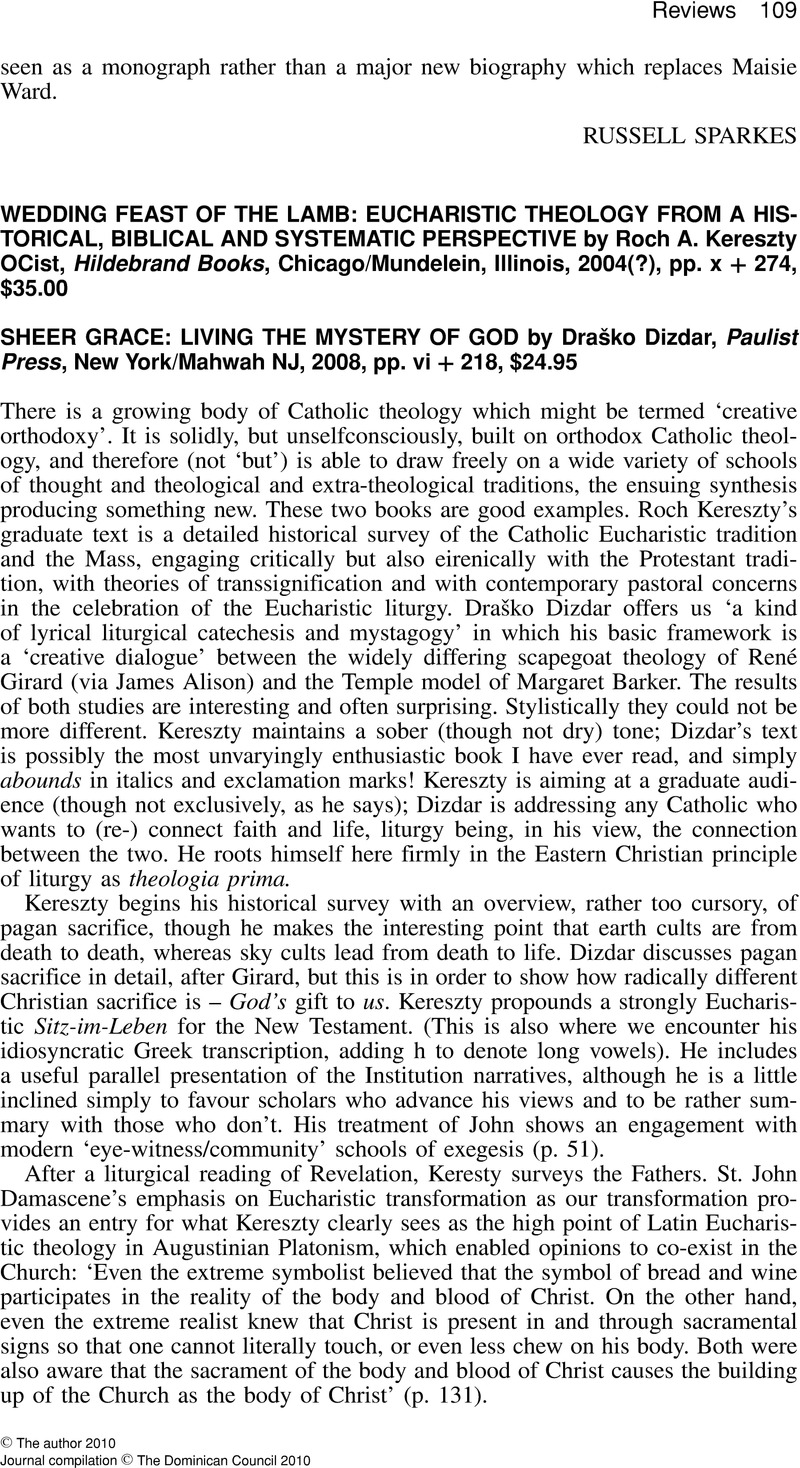No CrossRef data available.
Article contents
Wedding Feast of the Lamb: Eucharistic Theology From a Historical, Biblical and Systematic Perspective by Roch A. Kereszty OCist, Hildebrand Books, Chicago/Mundelein, Illinois, 2004(?), pp. x + 274, $35.00 - Sheer Grace: Living the Mystery of God by Draško Dizdar, Paulist Press, New York/Mahwah NJ, 2008, pp. vi + 218, $24.95
Review products
Wedding Feast of the Lamb: Eucharistic Theology From a Historical, Biblical and Systematic Perspective by Roch A. Kereszty OCist, Hildebrand Books, Chicago/Mundelein, Illinois, 2004(?), pp. x + 274, $35.00
Sheer Grace: Living the Mystery of God by Draško Dizdar, Paulist Press, New York/Mahwah NJ, 2008, pp. vi + 218, $24.95
Published online by Cambridge University Press: 01 January 2024
Abstract
An abstract is not available for this content so a preview has been provided. Please use the Get access link above for information on how to access this content.

- Type
- Reviews
- Information
- Copyright
- Copyright © The author 2010. Journal compilation © The Dominican Council 2010.


